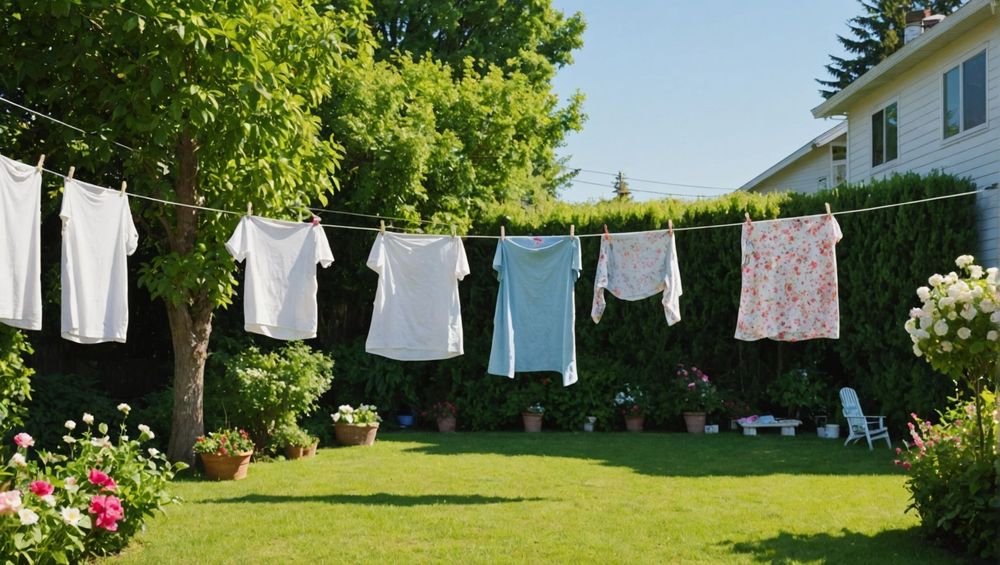Doing laundry can seem like a mundane task, but mastering the art of washing your clothes properly can prolong their life and maintain their appearance. This article will guide you through the essential steps to sort, wash, and dry your laundry effectively. By following these practices, you will not only save time but also enhance the cleanliness and care of your garments. Let’s dive into the right way to tackle your laundry routine.
1. Sorting Your Laundry

The first step in the laundry process is sorting your clothes properly. This helps prevent colors from bleeding onto each other and ensures that each item’s fabric type is washed in the most appropriate manner. Generally, you should categorize your laundry into the following groups:
- Whites: Includes items like t-shirts, socks, and bed linens that are typically washed in hot water.
- Lights: Clothes that are lighter in color but not completely white. This category includes pastels and light shades.
- Darks: These are dark-colored fabrics like blacks, navy blues, and deep reds.
- Delicates: This group includes silk, lace, or anything with embellishments, which require a gentle wash.
- Towels and Bedding: It’s often best to wash these items separately due to their heavier weight.
Sorting ensures that not only do colors stay vibrant, but also that fabric types are cared for appropriately. For example, washing delicates with heavier items can cause damage, while washing whites in cold water can prevent their brightness from fading. Additionally, check the care labels on each garment, as specific instructions may be provided.
2. Choosing the Right Detergents

Once you’ve sorted your laundry, selecting the correct detergent is crucial for effective cleaning. There are various types of laundry detergents available, each designed for different needs:
- Powder Detergents: Great for general washing and are often more cost-effective.
- Liquid Detergents: Ideal for pre-treating stains and can dissolve better in cold water.
- Pods: Convenient and mess-free, these are pre-measured for ease of use.
- Eco-Friendly Detergents: Made from natural ingredients and are better for the environment.
Additionally, ensure you are using the right amount of detergent as indicated on the packaging. Using too much can lead to soap residue on your clothes, while too little can result in inadequate cleaning. Always remember to keep sensitive skin in mind, as there are many hypoallergenic options available.
3. Setting the Right Wash Cycle
Selecting the appropriate wash cycle is key to a successful laundry experience. Most modern washing machines offer a variety of settings, which cater to different fabric types and levels of soil. Here are a few common cycles:
- Normal: Suitable for cotton and durable synthetic fabrics.
- Delicate: Designed for lighter fabrics that require gentle washing.
- Heavy Duty: Best for heavily soiled items like towels and work clothes.
- Quick Wash: Perfect for lightly soiled garments that need a fast turnaround.
Always pay attention to the temperature settings as well. For instance, warm water is effective for cleaning while cold water helps preserve colors. Setting your wash cycle correctly is vital in maintaining the integrity of your clothes and ensuring effective cleaning.
4. Drying Your Laundry Properly
The drying process is just as important as washing. Incorrect drying can lead to garment shrinkage or wear and tear. Here’s a breakdown of the methods you can use for drying your laundry:
- Air Drying: Hanging clothes on a line or rack is gentle and helps prevent shrinkage and fading.
- Machine Drying: For this, use the appropriate setting depending on the fabric. Use low heat for delicates and high heat for heavy fabrics.
- Dry Cleaning: Some items may require professional cleaning. Always check labels for guidance.
When drying, it’s also beneficial to separate your laundry by fabric type again. Mixing heavy items with lighter ones can result in uneven drying. Additionally, avoid overloading your dryer, as it can prevent proper airflow and extend drying times. Lastly, clean your lint trap regularly to ensure efficiency and reduce fire hazards.
Conclusion
Mastering the laundry process by following this step-by-step guide will help you achieve cleaner clothes while extending the life of your fabrics. Sorting properly, choosing the right detergent, selecting the correct wash cycle, and drying thoughtfully are all essential components. With practice, these steps will become second nature, making laundry day less of a chore and more of a routine. Don’t forget to always check care labels for specific instructions, as proper laundry care varies depending on fabric types. Happy washing!
FAQ
1. How often should I do laundry?
Your laundry frequency depends on multiple factors, including how many clothes you own, your lifestyle, and personal preferences. However, most people find doing laundry once a week sufficient.
2. Can I wash all my clothes in cold water?
While cold water can be used for many items, some clothes, particularly whites and heavily soiled items, may require hot water to effectively lift stains and bacteria.
3. Is it necessary to use fabric softener?
Fabric softener is not necessary, but it can help reduce static cling and make clothes feel softer. If you have sensitive skin, you may want to use hypoallergenic options or avoid it altogether.
4. What do I do if my clothes shrink after washing?
If your clothes shrink, check the care label for washing and drying instructions. It’s advisable to pre-wash new clothes in cold water and avoid high heat settings when drying.
5. How can I remove tough stains from clothes?
To tackle tough stains, treat them as soon as possible. Use a stain remover or laundry detergent directly on the stain and let it sit for a few minutes before washing. For specific stains, such as grease or wine, you may need specialized products.
